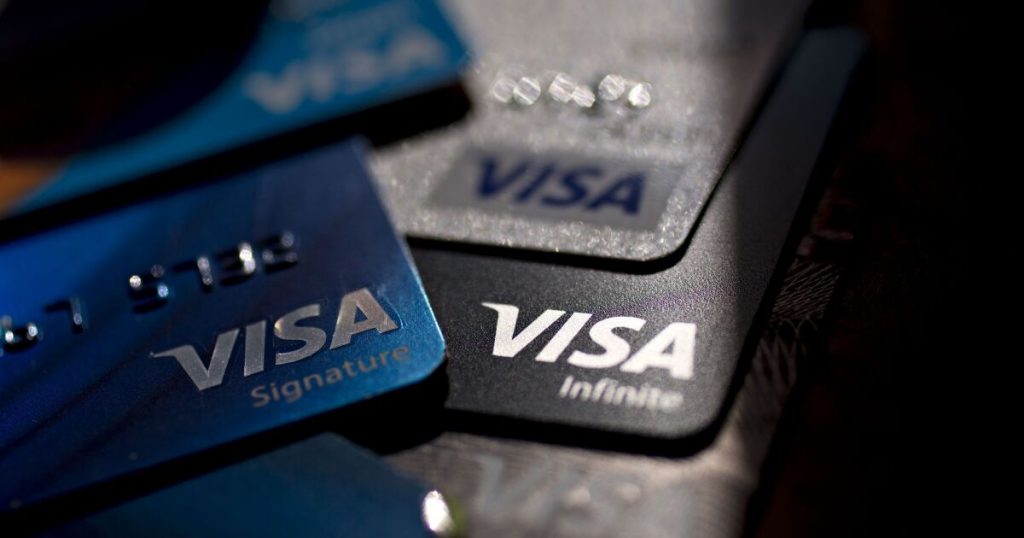- Key insights: Visa had a “better than expected” fiscal fourth quarter and said it expected that momentum to carry through the holidays.
- What’s at stake: Despite some nods to a softening economy, consumer spending remained resilient.
- Forward look: Visa expects tailwinds from the Olympics and FIFA World Cup in 2026.
Visa expressed confidence about the year ahead as the card network closes the books on its fiscal 2025.
The payment giant is expecting a “strong Q1 carrying the momentum that we saw coming out of Q4, with strong and stable underlying drivers,” Visa CFO Chris Suh said on a call with analysts Tuesday night. “We are anticipating a strong quarter going into the holiday of our fiscal Q1.”
Visa’s fiscal fourth quarter ends September 30, with its first quarter covering October, November and December.
Visa maintained its outlook for the forthcoming quarter, with adjusted net revenue growth in the high-end of the low-double digits.
“When looking at quarterly spend category data in the U.S., we saw broad-based strength, including improvements in retail services and goods, travel and fuel. Both discretionary and non-discretionary spend were up from Q3,” Suh said. “When you add that all up it makes for a resilient consumer, [and] a stable macro environment.
“We’re assuming the macro economic environment stays generally where it is today,” Suh said.
Full year 2026 adjusted revenue is expected to be in the low double digits, with windfalls from the Olympic and Paralympic Games in Q2 and the FIFA World Cup in Q3 and Q4
“We expect the benefit from value added services to be spread throughout the year as our clients will utilize our solutions in the build up to and during the events,” Suh said.
Investment outlook
Visa expects to make significant investments into its Visa-as-a-service stack. For example, Visa plans to enhance its products for cross-border payments and affluent customers, while expanding its
Analysts at William Blair said in a research note that Visa stood to gain stablecoin commerce share as traditional correspondent baking fragments.
“We note that Visa generates less than 15% of volume from cross-border,” according to the research note. “Although we are in the early days of stablecoin commerce, we believe regulatory clarity, industry standardization, and burgeoning infrastructure will shift a meaningful component of the roughly $20 trillion cross-border B2B market to emerging digital and traditional networks.”
Visa is also investing in its
As a result, Visa expects to grow its adjusted operating expenses in the low double digits throughout its fiscal 2026.
Fiscal Q4, by the numbers
Revenue for the fourth fiscal quarter ended Sept. 30 hit $10.7 billion, an increase of 12% from the same period last year. That edged out analysts’ estimates of $10.6 billion in revenue, according to S&P Capital IQ.
Revenue was “better than expected,” largely due to value added services revenue, commercial and money movement solutions revenue, and benefits from FX, Suh said.
Net income missed analysts’ estimates at $5.1 billion, or $2.62 per diluted share, representing a 4% and 1% decrease, respectively. Analysts expected $5.7 billion, or $2.94 per diluted share.
Payments volume increased 9% year over year on a constant dollar basis, and U.S. payment volume in both credit and debit grew 8%, just above Q3, Suh said. E-commerce grew faster than in-person transactions.
Cross-border volume excluding transactions within Europe jumped 12%. Total processed transactions increased 10% to 67.7 billion.
Service revenue, which is recognized from payments volume in the
Commercial and Money Movement Solutions revenue grew 10%, three percentage points above its growth in the prior quarter, Suh said.
Expenses rose 40% to $4.6 billion, largely from

